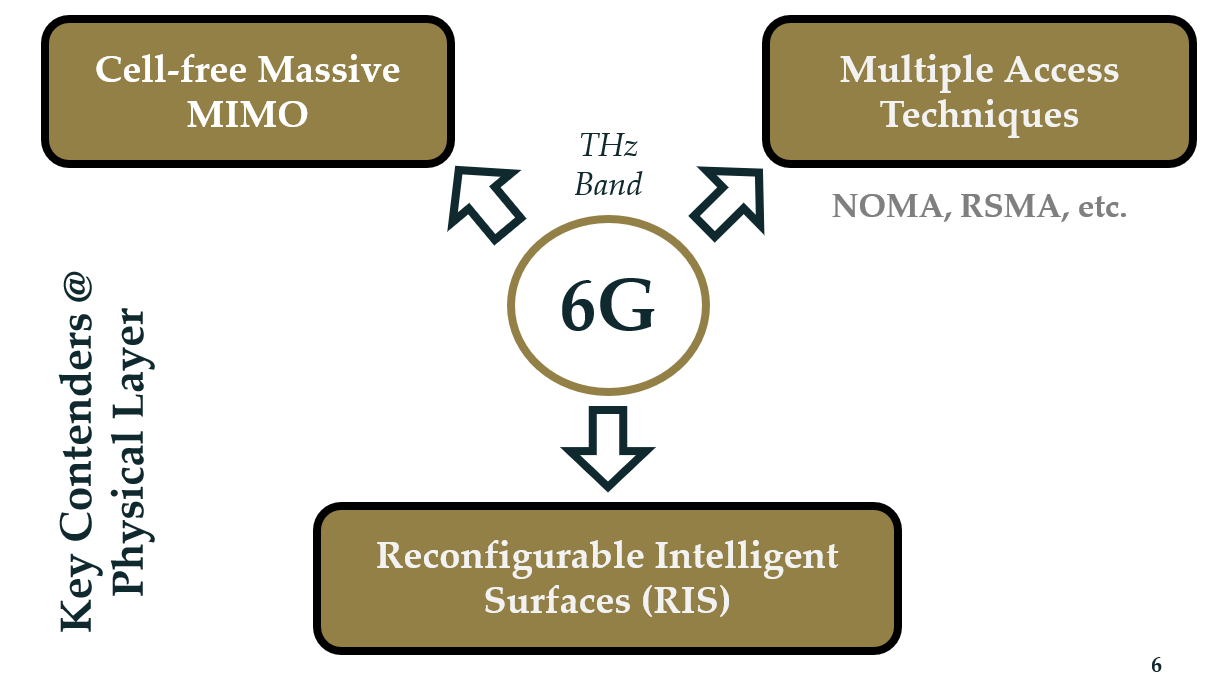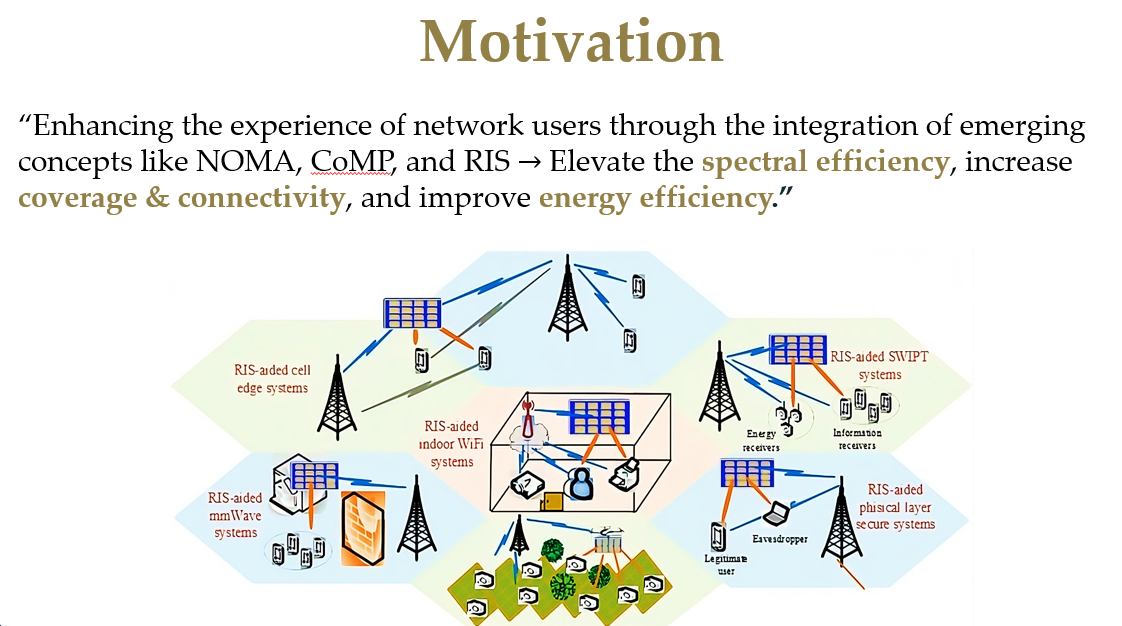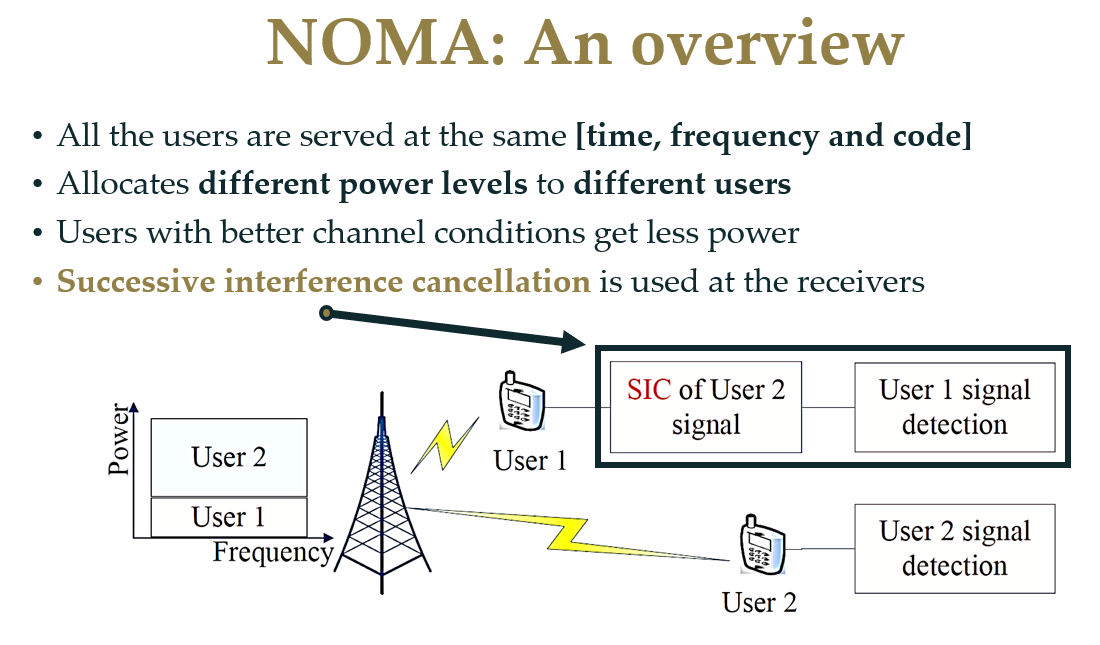NOMA: Revolutionizing Connections in the 6G Era
 Muhammad Ahmed Mohsin
Muhammad Ahmed Mohsin
As the world eagerly anticipates the arrival of 6G networks, researchers are tirelessly exploring innovative technologies to push the boundaries of speed, capacity, and efficiency. One such breakthrough that's creating a buzz is NOMA (Non-Orthogonal Multiple Access). Unlike traditional orthogonal approaches like FDMA and OFDMA, where users are allocated dedicated resources, NOMA allows multiple users to share the same resources simultaneously, leading to a revolution in how we connect.

How Does NOMA Work?
Imagine a highway where cars (data) travel at different speeds. With NOMA, multiple cars can occupy the same lane (frequency) simultaneously, as long as they maintain a safe distance (power level). This is achieved by using a technique called Superposition Coding, where signals from different users are combined with varying power levels at the transmitter. The receiver then uses Successive Interference Cancellation (SIC) to decode the signals, starting with the strongest and progressively peeling away layers to reveal the weaker signals.
Advantages of NOMA:
Increased Spectral Efficiency: By allowing multiple users to share resources, NOMA squeezes more data into the available spectrum, leading to higher network capacity.
Improved User Fairness: NOMA can allocate more power to users with weaker channel conditions, ensuring a more balanced and fair distribution of resources.
Massive Connectivity: NOMA is particularly well-suited for supporting the massive number of devices expected in the Internet of Things (IoT) era.
Lower Latency: By reducing the need for scheduling and resource allocation, NOMA can enable faster communication with lower latency.

Challenges and Future Directions:
While NOMA offers exciting possibilities, there are challenges to overcome:
Receiver Complexity: Implementing SIC can be computationally intensive, particularly for mobile devices.
Interference Management: Careful power allocation and interference cancellation techniques are crucial for successful NOMA implementation.
Researchers are actively developing advanced SIC techniques and exploring new NOMA variants, such as cooperative NOMA and cognitive radio-inspired NOMA, to address these challenges and unlock the full potential of this revolutionary technology.
NOMA: Paving the Way for a Connected Future
NOMA is poised to be a game-changer in the 6G landscape, enabling a future of hyper-connectivity with unparalleled efficiency and fairness. As research progresses and technology matures, we can expect to see NOMA integrated into a wide range of applications, from enhanced mobile broadband and ultra-reliable low-latency communications to massive machine-type communication and the Internet of Things. With NOMA, the future of connectivity looks brighter and more inclusive than ever before.
Subscribe to my newsletter
Read articles from Muhammad Ahmed Mohsin directly inside your inbox. Subscribe to the newsletter, and don't miss out.
Written by
